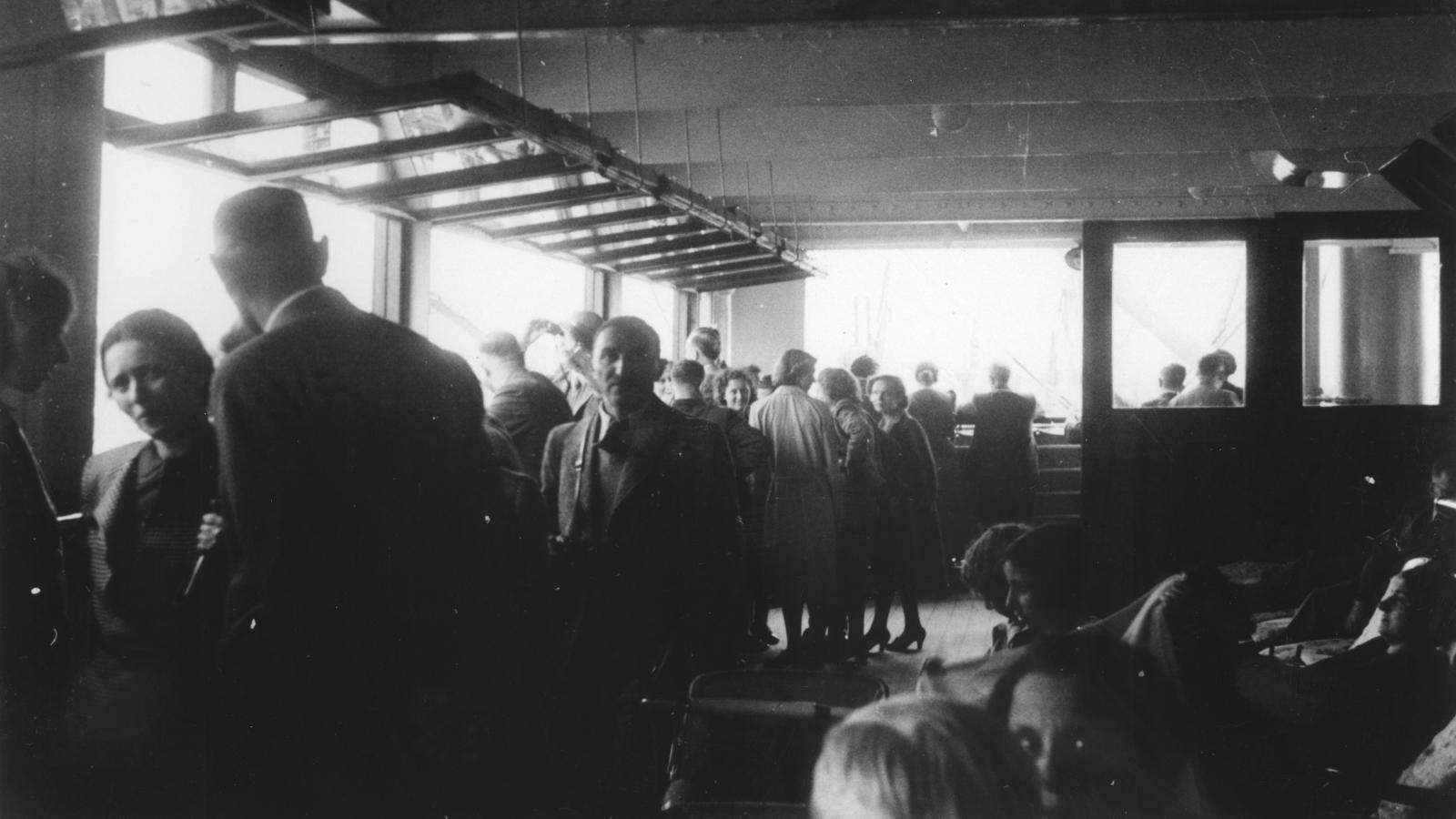Occasionally, a name or a phrase such as “Remember the Maine,” or “Watergate” enters the national lexicon. One such name has been burned into the collective memory of American Jewry: the St. Louis, a German luxury cruise ship which on May 27, 1939, steamed into Havana harbor with more than 900 German Jewish refugees from Nazi oppression, each with the letter “J” stamped in red on their passport. When the St. Louis arrived in Havana, its Jewish passengers were forbidden to come ashore. Despite the efforts of the American and Cuban Jewish communities to persuade the Cuban government to let the Jews land, on June 6th the vessel departed to return to Germany–and certain death for the refugees.
Until the late 1930s, Cuba had been a haven for European Jews. Especially since Manuel Benitez Gonzales, Cuba’s director general of immigration, willingly sold visas for a fee, 500 refugee European Jews a month were landing in Cuba in early 1939. Some went on to other destinations, but the Cuban Jewish population rose to 4,000 in 1938 and continued to increase sharply. With the deepening of the worldwide economic Depression, the spread of Nazi propaganda and the association of Eastern European Jews with socialism, Cuban president Laredo Brú felt the public pressure to reduce the number of Jewish immigrants.
Brú also felt the wrath of Benitez Gonzales’s rivals in government, who wanted their share of the visa-selling business. They convinced Brú to curtail Gonzales’s authority, and persuaded Brú to announce that prospective immigrants must post $500 to guarantee that they would not become a public burden. On May 5, 1939, Brú decreed Gonzales’s old visas null and void; starting May 6, immigrants had to post the bond.
When the St. Louis sailed on May 13, only a handful of passengers had met the requirement. The rest clung to one of Benitez’s now-invalid landing permits. The Hamburg American Line did not insist that each passenger post $500 before sailing. To the shock and dismay of the passengers when the ship arrived at Havana 13 days later, the Jewish passengers were forbidden to disembark.
With your help, My Jewish Learning can provide endless opportunities for learning, connection and discovery.
The United States government took the position that the St. Louis affair was an internal Cuban matter; while the American consul in Havana tried to be helpful, he took no formal action. The American Jewish Joint Distribution Committee sent an agent, New York attorney Lawrence Berenson, to Havana to negotiate with Brú to admit the refugees. Berenson had lots of business experience in Cuba, and he believed that Brú’s intransigence was based on his desire to have the $500 bonds paid to him directly. Thinking he was doing business as usual, Berenson offered Brú a lesser amount.
But Berenson misjudged Brú’s desire to dissociate himself from the entry of additional Jews to Cuba. Brú called off the talks and ordered the St. Louis, with its 906 Jewish passengers, to sail for Germany. Max Loewe, a passenger who had been in a Nazi concentration camp, could not face the prospect of returning to Germany and slashed his wrists and jumped overboard. Cuban police fished Loewe out and hospitalized him, but then refused to let his wife or children ashore to visit him.
On June 2, the St. Louis steamed out of Havana harbor. Once it was at sea, President Brú–facing the pressure of world opinion which ran counter to that of Cuban nationalists and fascists–agreed to reopen negotiations with Berenson. The captain of the St. Louis diverted the ship toward Miami, where it anchored 4 miles offshore. The U. S. immigration office in Miami announced that under no circumstances would the passengers be allowed to enter, and the U.S. Coast Guard shadowed the ship’s every movement until it returned to international waters steaming back to Havana.
Berenson and Brú met again on June 5, and Berenson still thought he could lower the cost of each bond. Brú abruptly lost patience, announced that time had expired on his government’s offer, and ordered the St. Louis and two other ships with Jewish refugees to depart. The St. Louis headed for Germany. Acting quickly, the Joint Distribution Committee deposited $500,000 in a Havana bank, more than Brú had demanded, but it was too late. The Cuban president would not relent; the ship was not to return. The White House received more than 200 letters from Americans pleading with the Roosevelt Administration to intervene. On June 8th, an eleven year old wrote to Eleanor Roosevelt:
Mother of our Country. I am so sad the Jewish people have to suffer so . . .Please let them land in America . . . It hurts me so that I would give them my little bed if it was the last thing I had because I am an American let us Americans not send them back to that slater (sic) house. We have three rooms we do not use. [My] mother would be glad to let someone have them.
On June 10th, Ambassador Joseph P. Kennedy approached the British government to take some of the refugees, and two days later it agreed. The Netherlands, France and Belgium immediately followed suit. Sadly, many of the passengers died between 1939 and 1945 when the Nazis overran Western Europe. These were lives that could have been saved.
Chapters in American Jewish History are provided by the American Jewish Historical Society, collecting, preserving, fostering scholarship and providing access to the continuity of Jewish life in America for more than 350 years (and counting). Visit www.ajhs.org.



